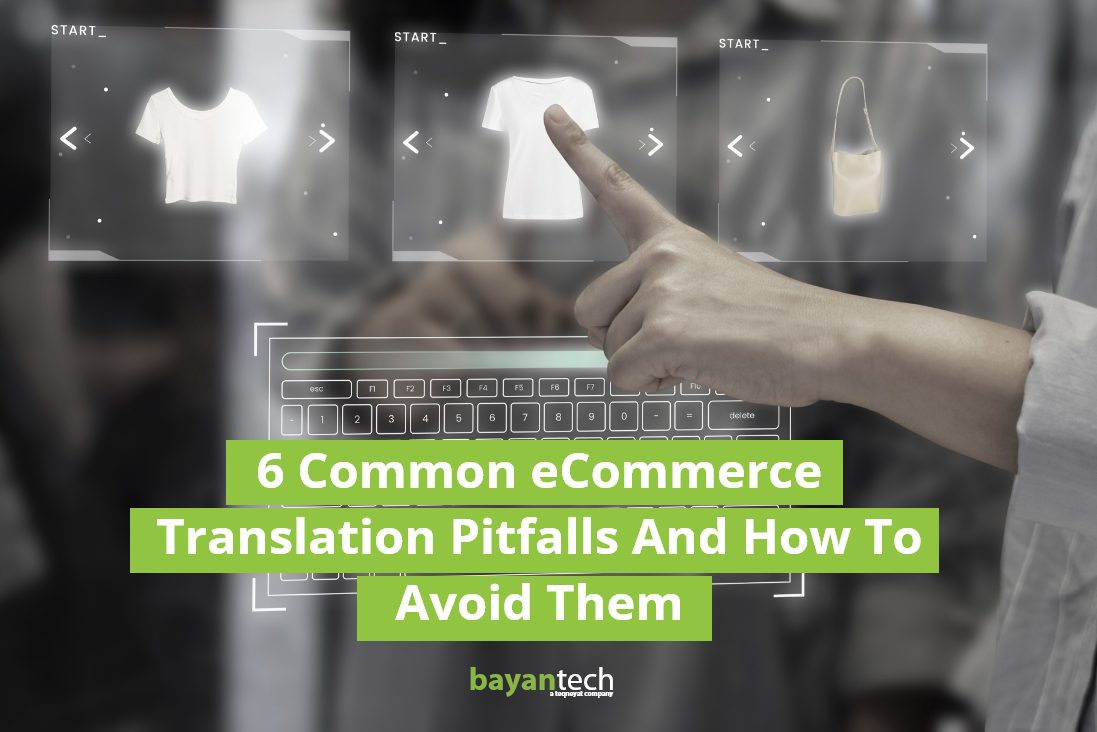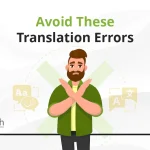eCommerce has become an indispensable part of global retail, especially after the rapid shift toward online shopping, opening up new opportunities for businesses to expand their reach and connect with customers worldwide.
However, with the many perks eCommerce brings, comes the challenge of resonating with multilingual audiences while navigating cultural and linguistic differences.
While translating your eCommerce platform is essential to meet the language and cultural preferences of your target audience, it still is a complex and challenging process that requires careful planning and professional execution to ensure success.
So, in this blog post, we will draw your attention to the most common pitfalls you might encounter when translating and adapting your eCommerce platform and provide practical tips on how to avoid them.
Ready to get started?
A Quick Glimpse into eCommerce Translation
eCommerce translation is the process of adapting your eCommerce platform for use in different languages and cultures (e.g. creating a multilingual website or mobile app) to effectively communicate your brand message and product offerings.
And to build an eCommerce platform that caters to customers who speak different languages, localization needs to be part and parcel of your eCommerce translation process. This means taking your eCommerce content beyond linguistic conversion to involve adapting multimedia, design, and user interfaces to fit the linguistic and cultural nuances of your customers.
Achieving such a successful blend between translation and localization helps to make your customers feel as if your eCommerce platform was created specifically for them, as if it was originally local.
Besides localization, eCommerce translation also involves other essential practices like international search engine optimization (ISEO), which helps increase the visibility of your eCommerce platform in different regions around the world.

eCommerce Content Every Business Has To Translate
- Product Descriptions
- Reviews
- Blogs
- Communication Messages
- Website Pages
- Marketing Materials
- Social Media Content
- Customer Support Materials
- User Interface Elements
Now that you know what eCommerce website translation is, let us have a look at the potential pitfalls you may encounter along the process and find out how to avoid them.
6 eCommerce Translation Pitfalls and How To Avoid Them
- 1. Inaccurate Translation
If your eCommerce platform, be it a website or app, displays inaccurate translation, it can negatively impact your brand image, customer trust, and ultimately your sales.
This issue usually occurs when businesses rely on machine translation or unprofessional translators to translate their eCommerce content. In 2020, Amazon launched its website in Swedish. And as soon as this happened, users, who are highly critical when it comes to messing with their native language, turned the translation into a laughing stock on Twitter.

Here, the product description was too literally translated, which resulted in the inaccurate translation of a term like ‘die’ in “die cast” in English as död (death) in Swedish, while the word “die” has nothing to do with death in this context.
How Can You Avoid This?
So, as over 75% of consumers prefer buying from websites speaking their language, they also need the content to be appropriately displayed without translation or linguistic errors.
And to achieve this, you must collaborate with professional linguists and translators who understand both the source language and the target language. In addition, they comprehend the local preferences and purchasing behavior of your target audience.
- 2. Cultural and Regional Insensitivity
Displaying culturally insensitive or irrelevant content on your commerce site or app is another pitfall you might encounter when you launch them in other countries.
Meeting your customers’ cultural and social differences is just as important, if not more important, than meeting their linguistic differences. Some terms and expressions might be meaningless or irrelevant when translated into other languages; at some points, they can even be offensive.
And that is why it is really important to focus on rendering the same effect your original content stirs using culturally and linguistically appropriate words instead of just resorting to literal translation. This also applies to the design you use and the visuals you display on your platform.
Two of the most common forms of cultural insensitivity businesses commit when translating their eCommerce platforms are:
- Displaying Inappropriate Visuals
Yes, some images, gestures, and symbols may be inappropriate and sometimes even offensive to your target audience.
For instance, in conservative countries, images that show people wearing revealing clothing can be unacceptable. And so is using gestures or symbols that are culturally inappropriate for some countries, like the thumbs-up sign in Greece, Iran, Russia, Sardinia, and parts of West Africa.
Additionally, using images containing animals that are considered sacred in some cultures, like cows in India or pigs in Islamic countries, can also be considered inappropriate. It will cause offense and, consequently, consumer repulsion.
- Overlooking Payment Preferences & Local Currencies
Payment preferences have undergone a significant transformation. With the rise of digital technology and e-commerce, consumers now have a multitude of payment options at their fingertips, from credit and debit cards to mobile wallets and cryptocurrencies.
According to a GlobalData analysis, the value of cash and cheque transactions has fallen between 3% and 8% between 2016 and 2026 as more people switch to credit transfers and payment cards.
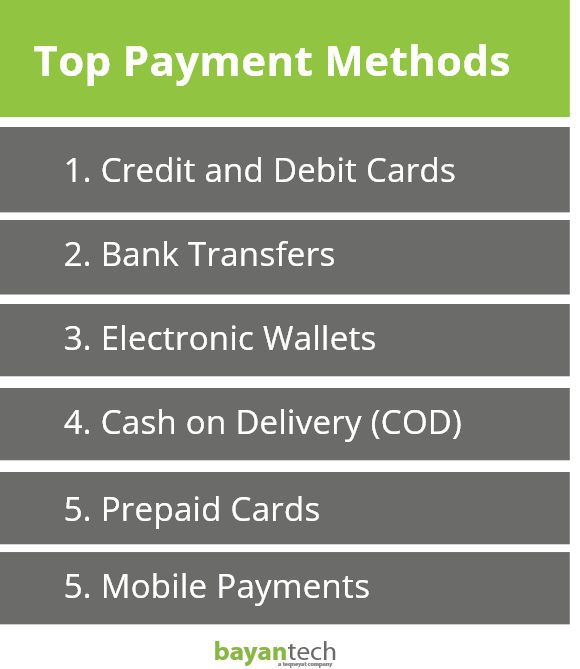
As payment methods continue to evolve, preferences vary from country to country influenced by a range of diverse factors like cultural norms, regulatory frameworks, and technological infrastructure. While Germans, for example, prefer to pay using Sofort, Polish shoppers prefer PayU.
Overlooking this fundamental element can be one of the main reasons your customers abandon their carts.
According to Grazitti Interactive, about 59% of online shoppers abandon their shopping carts because of the absence of local and personalized payment methods, which hurts checkout conversion rates.

However, what is even more important than the payment method is being able to make a purchase using their own currency, or at least conversion rates should be provided to avoid any sort of confusion. According to statistics, 92% of global shoppers prefer to shop and make purchases on sites that use their local currency.

So, imagine your eCommerce platform missing the preferred payment method of your target audience or not supporting their local currency. This will consequently lead to a significant decrease in your sales rate.
Sharing culturally irrelevant content, unlocalized visuals, or missing localized payment methods and currencies—all of this can affect your success in the target market negatively.
Don’t want to experience this? Here is how.
How Can You Avoid This?
One key answer to this question is “Research”.
Conduct extensive research on both the overall market and your specific target audience, and then always stay up-to-date with the latest trends, developments, and news of your target region.
Understanding the culture and local preferences of your target audience is crucial for creating an eCommerce platform that resonates with them on all levels.
And this can only be achieved by investing time and effort in extensive market research to gain a deeper knowledge of the buying behavior and cultural norms of your target audience.
This will help you to:
- Avoid displaying any visuals that may be considered offensive or inappropriate for them on your eCommerce platform.
- Utilize the knowledge you acquired to create a platform that caters to your audience’s preferences in terms of design and visual display.
- Gain insights into the most popular payment methods used in the target region.
- Identify the payment preferences of your target audience.
- Ensure that your platform supports those preferred payment methods and uses the local currency of your target country.
You should also consider working with local experts, such as cultural consultants or localization specialists, and marketing professionals, to gain deeper insights into the target market’s cultural nuances. They can also help you tailor your platform to better suit the needs and preferences of the target audience.
Embracing your audiences’ differences in all aspects will ultimately boost your customers’ satisfaction significantly, enhance their experience on your website or e-store app to a greater extent, and drive them to choose you over your competitors every time.
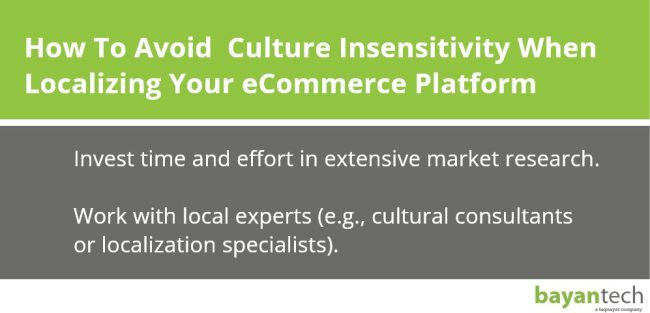
- 3. Layout And Design Issues
Another very common pitfall that might appear when translating and localizing your online store is related to issues in layout and design because of variations in text length and text directions after translation.
During the translation process, some languages tend to expand more than others, which causes the translated text not to fit within the required space, breaking the UI and ruining the layout.
But it is not only expansion that is usually problematic. Even when texts shrink after translation, several issues may appear, like inconsistent design and a cluttered layout where texts and images get squeezed together, making it really difficult to navigate through your website or app.
Let us show you to what extent some languages may expand or shrink after being translated from English.

The text direction also varies from language to language. Although all languages in Western Europe are left-to-right ones, some are read from right to left, like Arabic, Hebrew, Kurdish, and Persian.
Not considering such differences before translation can lead to visual inconsistency and several alignment issues, causing elements like buttons, menus, and forms to be misaligned, which affects readability and usability.
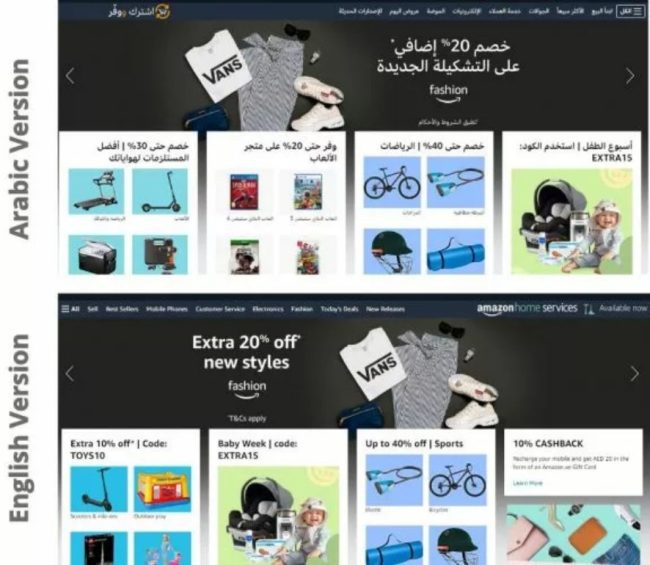
If you don’t optimize your eCommerce platform earlier in the designing phase, which is referred to as internationalization, issues like that will lead to poor usability and an unpleasant user experience, causing your platform to look unprofessional to your audience. So, what should you do?
How Can You Avoid This?
Internationalize your platform and conduct an in-context review.
The best way to avoid facing any potential layout and design issues when localizing your eCommerce platform is to always plan for localization from the beginning, which is a process known as internationalization.
So how can you do this?
- Design a flexible layout that can easily accommodate changes in text length and formatting without causing layout issues when localizing your platform to any target languages.
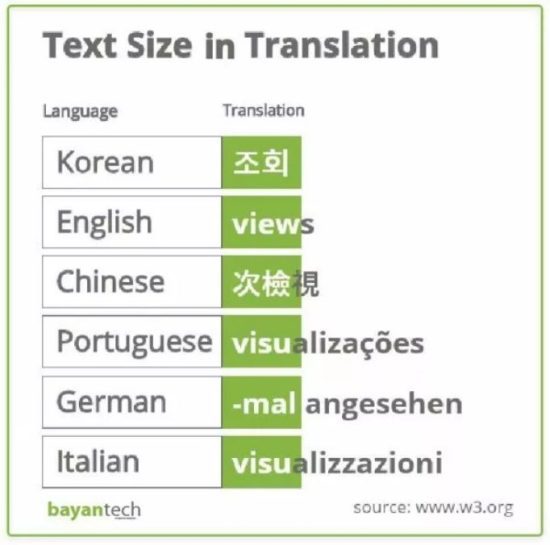
- Use responsive design techniques (e.g. fluid layouts and responsive typography) to ensure that your platform can adapt to different screen sizes and resolutions and that it looks and functions well on different devices, regardless of the language used.
Another very effective way to avoid layout and design issues is to always review your content within the design beforehand. You can do this by performing an in-context review, a type of content review process that involves reviewing content within its intended context or environment.
Conducting an in-context review will help you to review the translated content within the layout of the website or within the software interface to ensure that it fits within the available space and does not cause any display issues.

- 4. Ineffective SEO
Ending up with an ineffective SEO strategy is one of the most common pitfalls eCommerce businesses face when translating their online platforms, which can result in poor online visibility and reduced traffic from target markets.
And this might be one of the easiest and fastest ways to thwart your international success as an eCommerce business.
Did you know that 75% of website visitors never go beyond the first page of search results?

So why does this happen?
Some might mistakenly opt for translating the original keywords from the source language into the target instead of conducting keyword research to identify the most relevant and effective keywords in the target language.
They fail to notice that the translated keywords may not be the most commonly used or relevant in the target market, and that is the core of the problem.
Many also ignore the fact that different regions may have different search engines that are popular among users which again means that the website or app may not be optimized for the search engines commonly used in those regions.
In China, for example, the most widely used search engine is Baidu, followed by Sugou and Bing while Google and Haosou follow closely behind in terms of popularity.
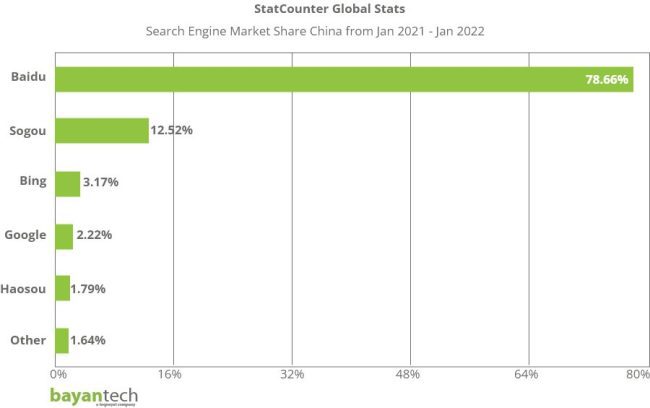
So is there something you can do to steer clear of such an unfortunate situation? – Let us find out
How Can You Avoid This?
International SEO is the key to ensuring good visibility and high ranking in search engine results pages for global audiences.
But first, what is international SEO?
International SEO refers to the process of optimizing an online platform to improve its visibility and ranking in SERPs or its discoverability on app stores, in the case of mobile apps, for audiences in different regions.
And to achieve successful International SEO, it is necessary to employ effective strategies and techniques tailored to the local languages, cultures, and search behaviors of your target audience.
So how can you do this?
- Conduct international keyword research to identify the most relevant and popular keywords in your target countries and incorporate them into your website or mobile app content and metadata.
- Optimizing your online platform for the most common search engines in your target region, not just Google.
- Implement hreflang tags to indicate to search engines which language and country version of your content to display to users in different regions.
- Use country-specific top-level domains (TLDs) or subdirectories to help search engines understand which country or region your content is targeted towards (e.g. .co.uk for the UK and .fr for France).
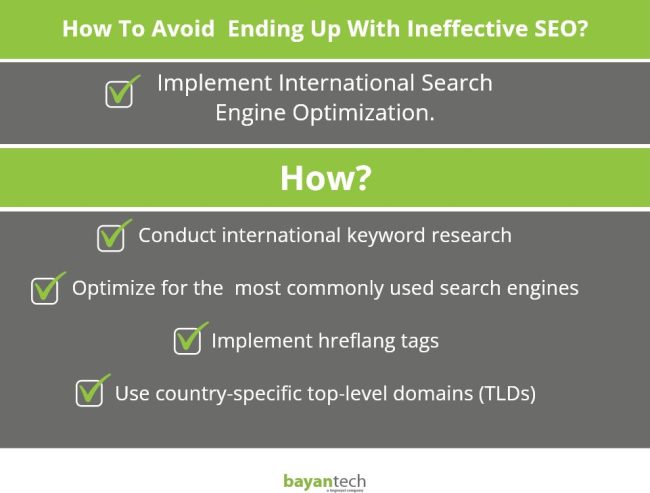
Following these international SEO best practices can help improve your online platform’s visibility and relevance in different markets.
However, you should always keep in mind that successful international SEO requires ongoing effort, research, and adaptation to the changing needs and preferences of your target customers.
- 5. Encoding Issues
After you translate your eCommerce platform, you might discover that some characters or symbols are not correctly displayed in the target language, and this usually happens because of encoding issues.
Relying on ASCII character encoding has always been great for most Western European languages. However, suppose you want Arabic website localization or translation into any language that uses non-ASCII characters like Chinese, Japanese, Korean, Russian, and Hindi. In that case, you will end up with encoding issues.
This will definitely harm your website or app, making it really difficult to read or understand your content.
Not only does it cause readability and usability issues, but it also leads to technical issues in some cases, like broken links and slow loading.

How Can You Avoid This?
To avoid encoding issues, you have to utilize a large character encoding system like Unicode to prepare your eCommerce platform for receiving various configurations based on your target language.
Unicode is an encoding system that encompasses all characters used in all modern languages, including Arabic as well as Japanese, Chinese, and Korean (CJK).
Using the Unicode encoding standard system is the best way to ensure that your website content or software-displayed text can be translated to any language and remain readable after translation.

And don’t forget that multilingual testing is always a great way to avoid encoding issues.
You can test your website or app with different language settings, and ensure that all text, symbols, and characters are displayed correctly and are easily readable. This includes testing with non-Latin scripts such as Arabic, Chinese, or Cyrillic.
8 Steps Every Medical Interpreter Takes
Looking for a medical interpreter? Discover the career path of medical interpreters and qualifications they need to acquire to take on interpreting jobs.
Sign up to our newsletter to receive the latest blogs and news.
- 6. Inadequate Customer Support
When eCommerce businesses decide to translate their platforms into other languages, they sometimes miss a very important aspect, which is providing customer support in multiple languages as well.
When your website or app is already available in various languages, your customers will expect to get customer support in their own languages. This might include contact forms, FAQ pages, live chat, and phone and email support.
You want to deliver a complete local shopping experience that makes your customers feel like your brand is almost local to them in all aspects. Missing anything that evokes a feeling of foreignness and exclusion can drive your target audience away from you.
The Multilingual Marketing Cheat Sheet:
A Guide for Your Global eCommerce
Get started with your eCommerce multilingual marketing with this actionable FREE guide.
How Can You Avoid This?
Ensure your target audience gets the assistance they need in their mother tongue. One study showed that 40% do not care if a human or bot is interacting with them as long as they receive assistance.
So, you can’t miss implementing multilingual website support channels like live chats and emails in the language of your target customers.
Another method is through chatbots that speak the language of your target audience.
Do you know that the introduction of a chatbot that only speaks the ten most popular languages would allow for communication with more than three billion people worldwide?
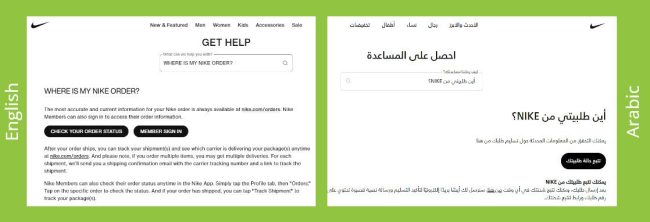
Another method is through chatbots that speak the language of your target audience.
Do you know that the introduction of a chatbot that only speaks the ten most popular languages would allow for communication with more than three billion people worldwide?

Studies also reveal that 69% of consumers prefer chatbots for quick brand communication. Basically, customer support is a vital aspect of eCommerce. How can you expect to gain your target customers’ trust and loyalty if you cannot even give them the support they need?
By providing multilingual customer support, you will improve your customer experience and boost satisfaction and loyalty significantly. And with this, your sales will improve as well.
Why Partner With A Professional eCommerce Translation Provider?
The best thing you can do to avoid eCommerce translation pitfalls is to work with a professional language service provider.
A professional eCommerce translation agency can give you access to all the resources you need to deliver a seamless shopping experience to your target audience.
Don’t know where to find this?
bayantech is here to help. We are a professional eCommerce localization services provider with more than two decades of experience helping eCommerce businesses seize global opportunities and achieve international success.
With our ISO-certified eCommerce translation services, rest assured that your business will be presented professionally to your global audience. We are fortified by a team of native translators, localization specialists, and designers who are all cultural experts and possess extensive subject-matter knowledge to meet your business needs across all industries and languages.

So no matter what industry you are in or what your target language may be, we are ready to provide you with 100% human translation services following the highest quality standards. Our eCommerce translation is powered by the most professional translators and the most advanced translation technology.
Contact us today to discuss your upcoming eCommerce translation project.

